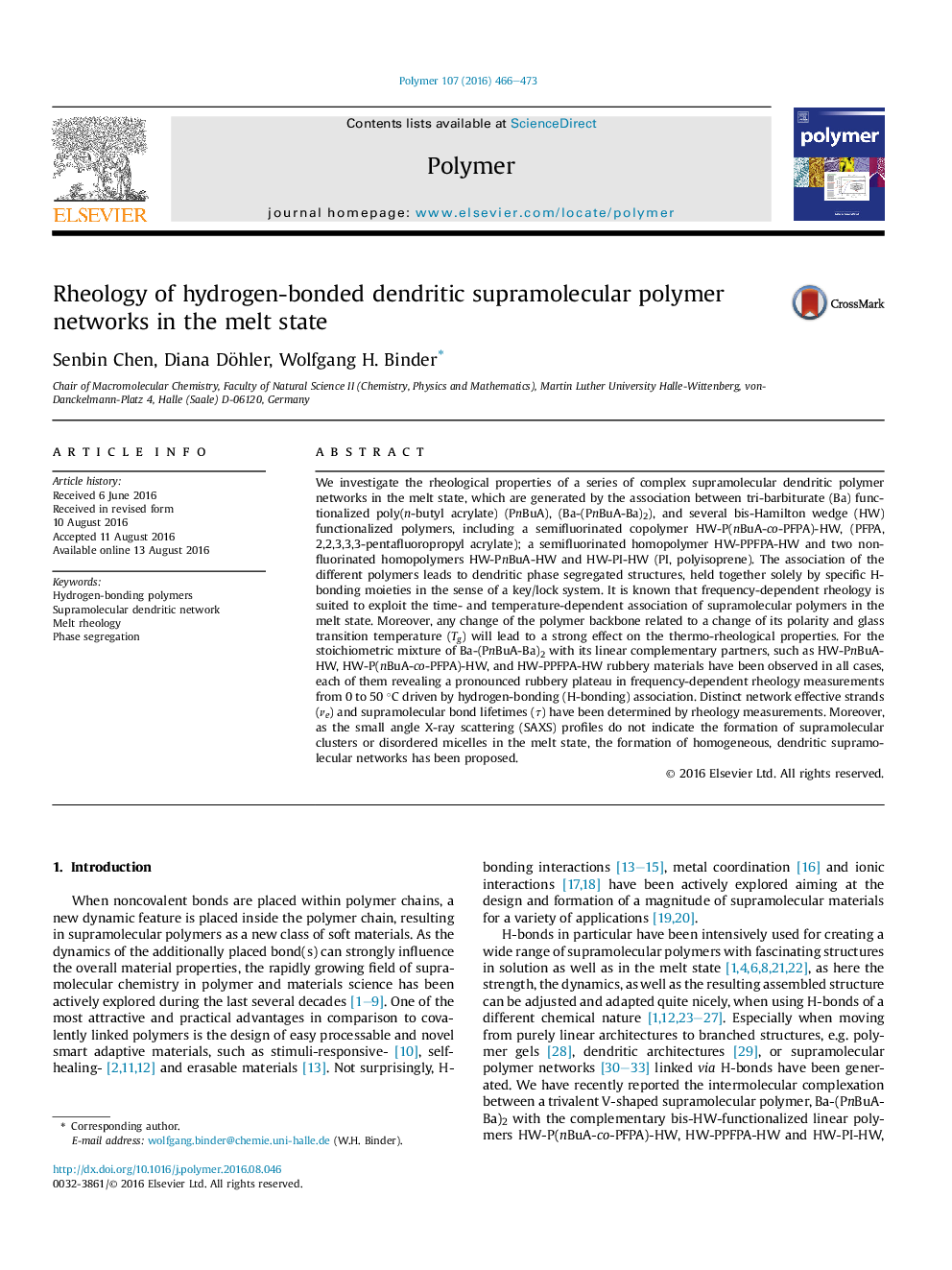| کد مقاله | کد نشریه | سال انتشار | مقاله انگلیسی | نسخه تمام متن |
|---|---|---|---|---|
| 5178771 | 1502499 | 2016 | 8 صفحه PDF | دانلود رایگان |
- Melt rheological properties of H-bonded dendritic polymer networks are studied.
- The association of different polymers is driven by complementary Ba/HW interactions.
- The formation of H-bonded networks is proven by the observation of a rubbery plateau.
- The association of the supramolecular polymers is extremely temperature sensitive.
- Besides the H-bonded aggregation, additional polymer phase segregation is proposed.
We investigate the rheological properties of a series of complex supramolecular dendritic polymer networks in the melt state, which are generated by the association between tri-barbiturate (Ba) functionalized poly(n-butyl acrylate) (PnBuA), (Ba-(PnBuA-Ba)2), and several bis-Hamilton wedge (HW) functionalized polymers, including a semifluorinated copolymer HW-P(nBuA-co-PFPA)-HW, (PFPA, 2,2,3,3,3-pentafluoropropyl acrylate); a semifluorinated homopolymer HW-PPFPA-HW and two nonfluorinated homopolymers HW-PnBuA-HW and HW-PI-HW (PI, polyisoprene). The association of the different polymers leads to dendritic phase segregated structures, held together solely by specific H-bonding moieties in the sense of a key/lock system. It is known that frequency-dependent rheology is suited to exploit the time- and temperature-dependent association of supramolecular polymers in the melt state. Moreover, any change of the polymer backbone related to a change of its polarity and glass transition temperature (Tg) will lead to a strong effect on the thermo-rheological properties. For the stoichiometric mixture of Ba-(PnBuA-Ba)2 with its linear complementary partners, such as HW-PnBuA-HW, HW-P(nBuA-co-PFPA)-HW, and HW-PPFPA-HW rubbery materials have been observed in all cases, each of them revealing a pronounced rubbery plateau in frequency-dependent rheology measurements from 0 to 50 °C driven by hydrogen-bonding (H-bonding) association. Distinct network effective strands (νe) and supramolecular bond lifetimes (Ï) have been determined by rheology measurements. Moreover, as the small angle X-ray scattering (SAXS) profiles do not indicate the formation of supramolecular clusters or disordered micelles in the melt state, the formation of homogeneous, dendritic supramolecular networks has been proposed.
148
Journal: Polymer - Volume 107, 19 December 2016, Pages 466-473
